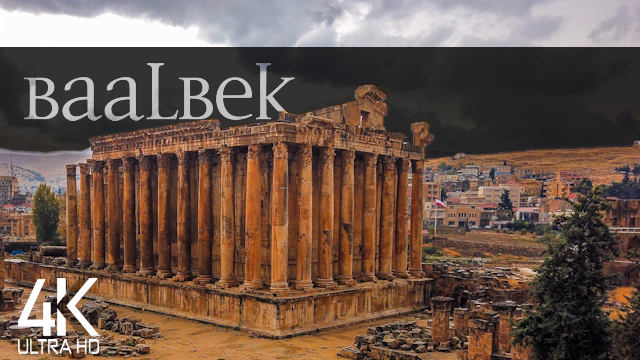 Baalbek (Lebanon) »
Baalbek (Lebanon) »
 Baalbek (Lebanon) »
Baalbek (Lebanon) »Here, you will find my best pictures from Baalbek, Lebanon (Asia).
Below, you may also see some exquisite Baalbek Drone Videos and Drone Pictures by One Man Wolf Pack, as well as regular Videos from Baalbek!
Below, you may also see some exquisite Baalbek Drone Videos and Drone Pictures by One Man Wolf Pack, as well as regular Videos from Baalbek!
No Pictures of Baalbek available
No Drone Photos of Baalbek available
Blog Articles from Baalbek »
Videos from Baalbek »
 |
 Latest Baalbek Drone Video
Latest Baalbek Drone Video
https://www.youtube.com/watch?v=ZJAnHvvyA84
Video [Internal ID 1032] taken in between 2016 & 2021
and published in 2021
Drone videos and more by the One Man Wolf Pack! Digital Nomad Videographer Miroslaw Wawak, known from Netflix Series "Crime Scene Berlin: Nightlife Killer", travels all 246 countries of the world and shares his experiences, pictures & videos. Join the madness, join the Drone Around The World!
 【4K】SIGHTSEEING: «Temple of Bacchus & Jupiter - Baalbek» Lebanon 2021 | Ultra HD Travel Video
【4K】SIGHTSEEING: «Temple of Bacchus & Jupiter - Baalbek» Lebanon 2021 | Ultra HD Travel Video
» Media data: This video (Internal ID 1032, shots taken in between 2016 & 2021 and video published in 2021) is an extraction of our self-captured Baalbek 4K Video Footage & Baalbek Pictures. Copyright protected Footage and Photos on Sale. For inquiries, please contact us via E-Mail or our Blog.
About Baalbek: Baalbek (/ˈbɑːlbɛk, ˈbeɪəlbɛk/; Arabic: بعلبك, romanized: Baʿlabakk, Syriac-Aramaic: ܒܥܠܒܟ) is a city located east of the Litani River in Lebanons Beqaa Valley, about 67 km (42 mi) northeast of Beirut. It is the capital of Baalbek-Hermel Governorate. In Greek and Roman times Baalbek was also known as Heliopolis (Ἡλιούπολις, Greek for Sun City). In 1998 Baalbek had a population of 82,608, mostly Shia Muslims, followed by Sunni Muslims and Christians. It is home to the Baalbek temple complex which includes two of the largest and grandest Roman temple ruins: the Temple of Bacchus and the Temple of Jupiter. It was inscribed in 1984 as an UNESCO World Heritage site. // The Temple of Bacchus is part of the Baalbek temple complex located in the broad Al-biqā (Bekaa Valley), Lebanon. The temple complex is considered an outstanding archaeological and artistic site of Imperial Roman Architecture and was inscribed as an UNESCO World Heritage site in 1984. This monument to Bacchus is one of the best preserved and grandest Roman temple ruins; its age is unknown, but its fine ornamentation can be dated to the second century CE. // The Temple of Jupiter is a colossal Roman temple, the largest of the Roman world, situated at the Baalbek complex in Heliopolis Syriaca (modern Lebanon). The temple served as an oracle and was dedicated to Jupiter Heliopolitanus. It is not known who commissioned or designed the temple, nor exactly when it was constructed. Work probably began around 16 BC and was nearly complete by about AD 60. It is situated at the western end of the Great Court of Roman Heliopolis, on a broad platform of stone raised another 7 m (23 ft) above the huge stones of the foundation, three of which are among the heaviest blocks ever used in a construction. Cultic activity had long taken place at the site; the temple presumably replaced an earlier one, possibly using the same foundation.

»
Stock from 160+ Countries | 2025
 Search 🔍
Search 🔍 Quick Links 🔥
Quick Links 🔥»
 Baalbek
Baalbek
[ 1/ 1]

[43/46]
[60/60]

[41/41]

[22/26]
[14/14]

Want more? Check out the
»One Man Wolf Pack YouTube-Channel

Miroslaw Wawak
One Man Wolf Pack
Paraguay
© Copyright Information
»Full Site Notice | © One Man Wolf Pack 2025
Page Views: 1026











